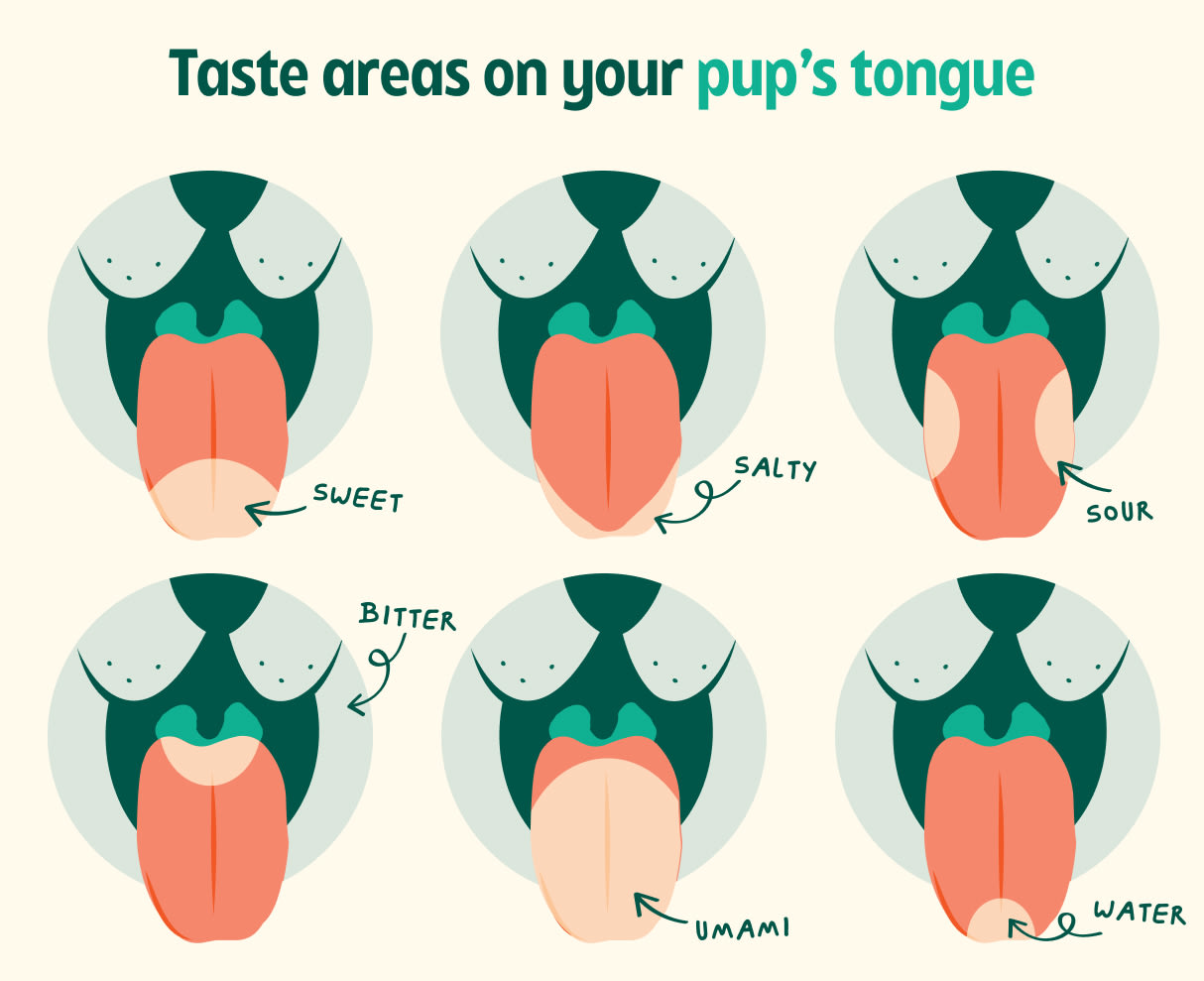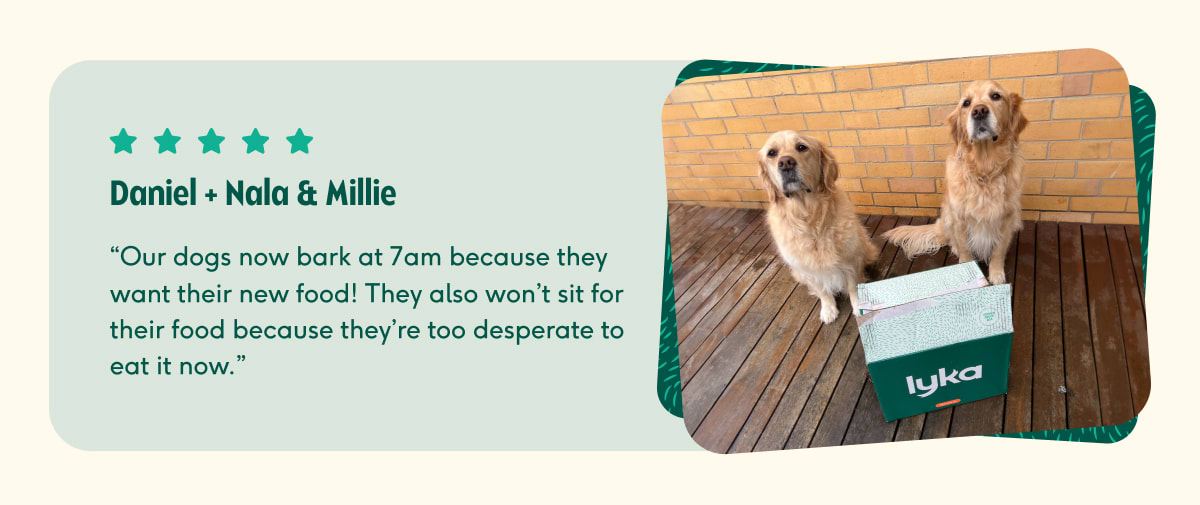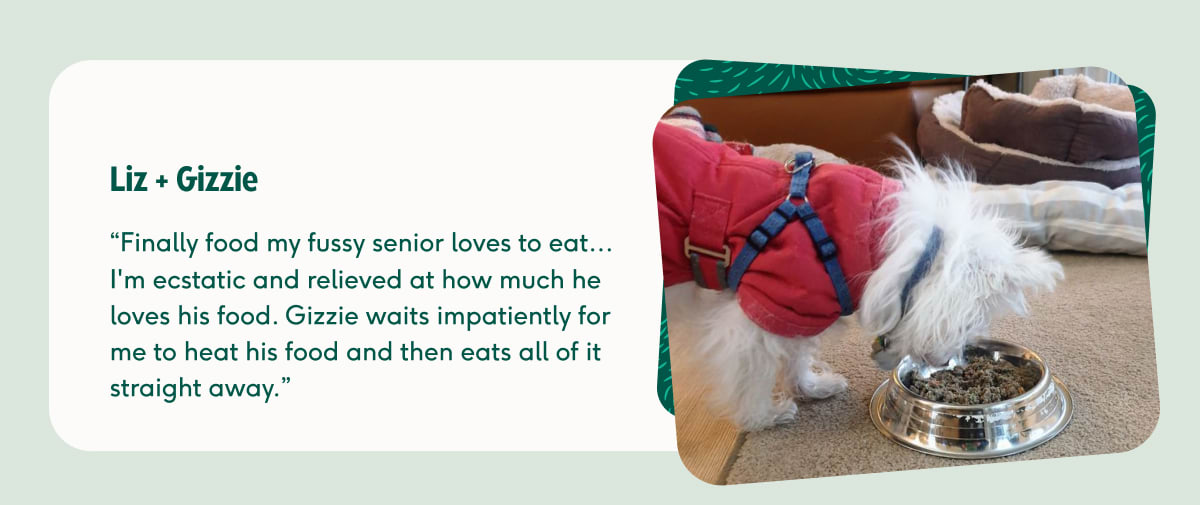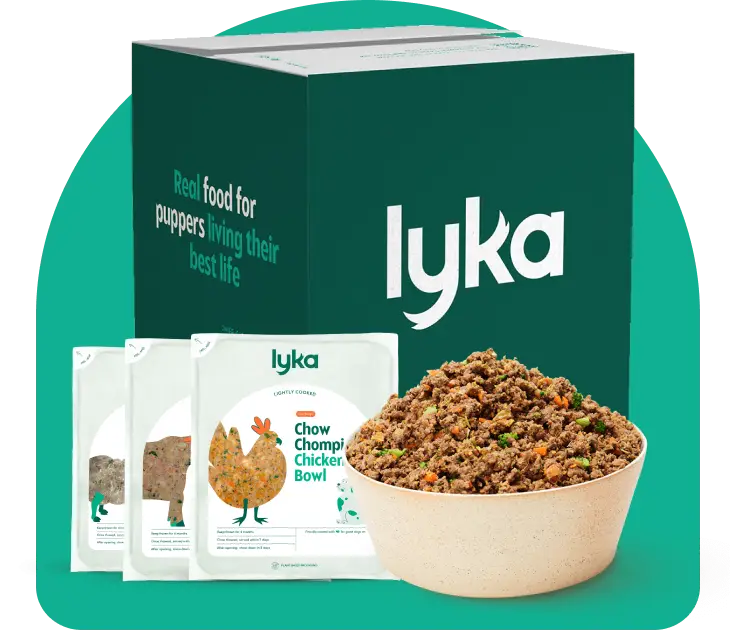“They’re just a dog! It doesn’t matter what they eat.”
If we are what we eat, why shouldn’t this extend to our dogs? While our pups have fewer tastebuds than humans, they outdo us by a long shot when it comes to sense of smell. They’ve even got a specialised organ along the roof of their mouth — just to pick up scents!
Whether you’re looking for ways to enhance your dog’s appetite or they’re not showing interest in their food, here’s how you can better understand their taste (and smell) preferences. Together, let’s make mealtimes something they look forward to.
A tour of your dog’s tastebuds
Dogs have the same taste receptors as humans, with one addition — which we’ll cover further down.
Your dog has specific tastebuds for:
Sweet foods like blueberries and raspberries.
Sour foods— not generally found in dog food as they don’t enjoy the taste.
Salty foods for consumption in small amounts: Celtic Sea salt is safest for dogs. Many commercial pet foods have a high sodium content.
Bitter tastes like ginger and turmeric.
Umami tastes found in human-grade protein sources.
Dogs also have specialised tastebuds for water. If your dog is on a kibble diet and drinks a lot of water, it may not be just because they love the taste: dry food can dehydrate your dog, leading them to lap up that H2O even more.

Why the impact of commercial pet foods goes beyond taste
Commercial dog food is designed to be shelf-stable; you can buy it in bulk and feed it over a long period of time. While this is convenient, it’s worth weighing up the potential impact it can have on their health.
Commercial pet foods are cooked and processed at very high temperatures. This kills any bacteria, along with the nutritional value of ingredients.
This can limit the diversity of nutrients that your dog is exposed to, despite these foods being marketed as “complete and balanced”. Feeding commercial diets daily can lead to deficiencies or intolerances in the long-term.
Our dogs have favourite foods and tastes, just like us!
According to Louise Hawkins, our in-house qualified veterinary nurse, your dog’s preferences can vary depending on:
Age. Older dogs have a dampened sense of taste and smell, which can affect appetite.
Boredom. Your dog might be craving new nutrients or tired of eating the same thing each day. Dogs are sensory beings!
Tummy troubles. If your dog’s digestive system doesn’t agree with a particular ingredient, they might be less interested in their food.
Too many treats. If they’re getting lots of treats throughout the day, they might be hitting their caloric ceiling and will therefore have lost interest by mealtime.
Health issues like viral infections or certain medication can reduce smell and taste**.** Your dog might prefer foods with stronger aromas as a result.
Certain breeds (like brachycephalic dogs) have a reduced sense of smell, which means they opt for stronger-smelling foods.
Gender. Female dogs have a stronger sense of smell though naturally have higher levels of estrogen which can suppress appetite, while males have more progesterone and testosterone which may stimulate appetite.
Environmental factors like season and weather. Your dog needs fewer calories in the warmer months: this reflects their reduced energy needs to maintain their core temperature.
The hidden side of taste preferences in dogs
For parents of fussy pups, it can be difficult enough getting them to eat at all… let alone enjoy it! If your pup isn’t tucking into their meals, there’s a chance it may not be about the taste. At least, not directly.
1. Behavioural factors
If you find yourself caving to your dog’s fussiness on a regular basis, you might be enabling picky eating habits — often without realising. This can be fixed with some simple changes, like setting a regular meal schedule.
If you’re struggling to pinpoint your dog’s taste preferences, check out our fussiness tips or speak to our friendly Customer Care team.
2. The impact of gut bacteria for your dog
Your dog’s nutrition has a direct effect on the health of their gut microbiome. When the balance of bacteria in the gut is off, this can impact their brain via the gut-brain axis — prompting their disinterest in food and bringing on feelings of anxiety at mealtimes.
If their taste preferences don’t align with what’s in front of them, this can put them off even further. For pups who can’t tolerate certain proteins, fresh feeding gives you the flexibility to find something healthy that they also enjoy.
Why every dog deserves a fresh diet
Just as your dog’s ancestors rotated their sources of food in the wild, your dog will benefit from a variety of ingredients and recipes. According to this study, dogs prefer the novelty of new foods — especially after being fed the same diet for a long period of time. Some dogs are also more predisposed to prefer certain foods over others, but little published research exists in this area.
Does your dog give you the “feed me” puppy dog eyes?
If food isn’t your dog’s biggest motivator in life, it can be tough to imagine them getting excited for their meals. Lyka has delighted the tastebuds of thousands of Australian dogs, and we’d love to give your dog a similar culinary journey.
Here’s what you might expect after transitioning to Lyka. Just ask our four-legged customers, who have their own special ways of reminding their parents that it’s time for Lyka.
Norman has a “feed me” face for his fur mama Alison, and little Louie stops whatever he’s doing: staring at Rossana until he sees the Lyka packets coming out!



If your pup made nutrition choices on your behalf, would you want them to choose processed food that’s always the same? Or meals bursting with new textures and tastes?
Across Lyka’s recipe range, we use over 60 different ingredients — with six unique proteins. This is like eating a different protein and side of vegetables each day: just like you.
)
)
)

)
)
)
)
)
